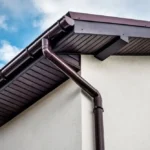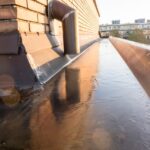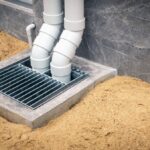Are you a homeowner looking to take your roof repairs into your own hands? A DIY rubber roof patch could be the perfect solution for you. Having a leaky roof is a common issue, but fixing it doesn’t always require professional help. By learning more about DIY methods, you can handle minor repairs efficiently and cost-effectively. This guide will walk you through the entire process, ensuring you’re fully equipped to address your roofing needs.

Why Opt for DIY Rubber Roof Patching?
Rubber roofs are both durable and economical, a combination that makes them a popular choice among homeowners. Understanding how to perform a DIY rubber roof patch is not only empowering but also financially prudent. By doing it yourself, you can save money, enhance your home’s longevity, and gain the satisfaction of maintaining your property.
Assessing Roof Damage
Before you start, assess the extent of the roof damage to ensure a patch is applicable. A thorough evaluation will help you decide whether a simple patch will suffice or if you need a more comprehensive repair plan. For guidance on assessing your roof, see our roof inspection checklist.
Gathering Necessary Materials
Having the right materials on hand is crucial for a successful repair. Common materials include rubber repair kits, adhesive, primer, and a brush. It is crucial to buy high-quality materials to ensure a lasting fix.
Types of Rubber Roofing
Knowing what type of rubber roof you’re dealing withEPDM, TPO, or PVCcan dictate the kind of patching materials you need. They might require different adhesives or primers, so read labels carefully.
Steps for DIY Roof Patching
Step 1: Clean the repair area thoroughly, removing any debris or grime.
Step 2: Use a primer to treat the area, which prepares the surface for the adhesive.
Step 3: Cut a patch of rubber material to the right size, allowing a couple of extra inches to overlay around the damaged area.
Step 4: Apply the adhesive, noting the manufacturer’s instructions concerning application and setting time.
Step 5: Secure the patch in place, using a roller to ensure no air bubbles are trapped underneath.
For additional detailed steps on application, you can refer to our roof sealant application guide.
Common Mistakes to Avoid
Ensure your patch is well-secured without wrinkles; wrinkles can lead to water pooling and further damage. Avoid doing roofing work in adverse weather conditions, as this can compromise the adhesive’s effectiveness.
Maintaining Your Rubber Roof
Ongoing maintenance is vital to prolong the life of your rubber roof and prevent further damage. Regular inspections can catch small problems before they escalate, so consider regular checks, especially after storms. For a complete guide on inspections post-storm, visit our roof inspection post-storm page.
Professional Help: When to Seek It
While many repairs are manageable with a DIY rubber roof patch, some situations warrant professional intervention, especially when dealing with larger structural damage.
Safety Precautions
Roof work can be dangerous. Use proper safety gear like harnesses and helmets and ensure stable ladders when performing repairs. Understanding these precautions can keep you safe.
Environmental Factors
Consider how local weather might impact your repair and maintenance strategies. Extreme temperatures, either hot or cold, can affect the adhesive’s set time and integrity.
Budgeting Your Repair
Budgeting isn’t just about the cost of materialsit includes tools you need, potential future repairs, and even any unexpected expenses. A properly executed DIY rubber roof patch is cost-effective but knowing your budget limits is integral to your planning.
Further Learning Opportunities
Many online platforms offer free courses in basic roofing, perfect for homeowners looking to enhance their skills. Always look for credible sources to expand your knowledge base further.
Case Study: Successful DIY Patch
Reading about others’ experiences can be beneficial. One homeowner reported saving hundreds after personally patching their garage’s leaky rubber roof. Their journey can inspire others to try their hand at DIY patching.
Consider the external resource on flat roof maintenance tips, flat roof maintenance tips by American Weather Star, to expand your insight into maintaining your roof’s condition.

FAQ
1. Can I use a regular adhesive for rubber roofs?
No, it’s crucial to use adhesive specifically designed for rubber roofing to ensure durability.
2. What time of year is best for patching?
Early spring or late summer are typically ideal since weather conditions tend to be more stable.
3. How long will a DIY patch last?
Properly applied patches can last several years, especially with regular inspection and maintenance.
With these foundational insights and steps, readers should now be equipped to tackle minor roof repairs with confidence. Empowering homeowners through a comprehensive understanding of the process not only saves money but also serves as a gratifying endeavor.
This article contains affiliate links. We may earn a commission at no extra cost to you.







